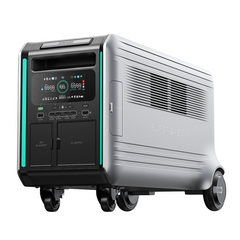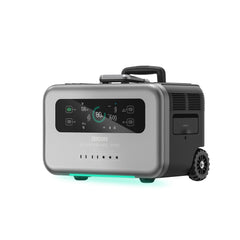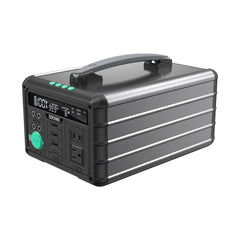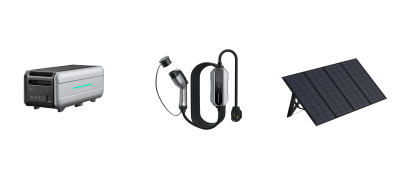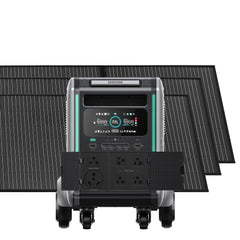Solar Thermal vs Photovoltaic: Understanding the Differences
Solar thermal and Photovoltaic systems are two distinct solar technologies that tap into the sun's radiation for energy generation. Before making any investment in these systems, it is essential to understand their specific functions. Solar energy is harnessed directly from the sun's radiation, and there are two primary ways to achieve this: solar thermal and photovoltaic technologies.
This blog post will examine how each technology works, its pros and cons, suitable applications of each technology, and how to choose the right technology for your specific needs.

Solar Thermal Vs Photovoltaic - What Is the Difference?
Solar photovoltaic technology is a sustainable energy solution that transforms sunlight into electricity using solar panels. Each PV panel consists of photovoltaic cells, also known as solar cells, that convert light photons (sunlight) into electrical voltage. This process is called the photovoltaic effect.
On the other hand, solar thermal panels function similarly to PV panels in converting sunlight into usable energy. However, their approach is distinct, as thermal panels use a heat-transfer fluid, such as water or air, to capture the energy, unlike PV panels that rely on semiconductors. These methods are efficient and eco-friendly for heating residential and commercial spaces, effectively reducing reliance on fossil fuels and minimizing greenhouse gas emissions.
Solar Thermal Vs Photovoltaic – How Does Each Work?
These solar heating panels consist of tubes filled with a mixture of glycol and antifreeze, arranged side by side on the roof to absorb sunlight. The heated liquid is then directed to a copper coil, which warms the water tank, providing hot water for use. To ensure efficient solar thermal energy storage, a pump is used to circulate the liquid and prevent it from cooling down the water in the tank on cold days.
The collectors used for slow and medium temperatures can be flat plate panels or tubes, while high-temperature collectors include concentrated systems like solar towers, parabolic troughs, Fresnel reflectors, and dish/ Stirling. Solar thermal systems can be combined with gas central heating to ensure continuous heating during winter. Those aiming to avoid fossil fuels entirely can opt for a thermodynamic system that uses an in-built compressor to heat water, ensuring an uninterrupted supply continuously.
In contrast, solar PV panels consist of two layers: silicon and a semi-conducting material. When exposed to sunlight, they generate an electric field, producing a small electricity voltage. This direct current electricity travels to an inverter, which converts it to alternating current (AC). The AC electricity is then sent to the fuse box, powering household appliances or, if not needed, redirected to the electric grid.
There are two types of residential solar PV systems: stand-alone off-grid panels and grid-connected panels using an inverter. Grid-connected systems allow homeowners to sell surplus energy back to the grid and rely on it when needed. On the other hand, those opting to be off-grid require on-site batteries to store sufficient power for their homes.
There are three main types of solar PV panels: Monocrystalline, Polycrystalline, and Thin film solar cells. These types differ in efficiency, flexibility, and cost.
Solar Thermal Vs Photovoltaic - Weighing the Pros and Cons
Pros of Solar Thermal
- Cost-Effective Installation
Installing solar thermal is cheaper than solar PV systems, making it a budget-friendly "green" option.
- Integration with Central Heating
Solar thermal systems can be integrated with your central heating, offering potential savings on home heating costs, especially during winter months. However, this integration may increase the initial installation expense.
- Saves Space
Due to their efficient heat conversion, solar thermal systems require less roof space than solar PV, making them an ideal choice for limited rooftop areas.
- High Efficiency
Solar thermal systems boast exceptional efficiency in converting the sun's energy into heat, outperforming solar PV systems.
- Cost Savings
A thermal system can potentially lower your monthly expenses for water, gas, or electricity used for heating.
Cons of Solar Thermal
- Reduced Efficiency During Winter Months
During colder winters, the solar thermal system's effectiveness decreases, requiring an additional energy source to reach the desired water temperature. Unfortunately, this often involves reverting to fossil fuels with a significant carbon footprint. Moreover, if your system is integrated with central heating, the reduced effectiveness in winter leads to diminished savings during these months, potentially making integration less worthwhile.
- Shorter Lifespan Compared to Solar PV
Solar thermal systems may last up to 25 years, although warranties usually cover only 5-10 years. This lifespan is considerably shorter than that of solar PV installations, which typically endure for about 30 years.
- Higher Maintenance Costs
Solar thermal systems require fluid replacement every 5 - 7 years, and the plumbing involved can lead to potential leaks and the need to replace water pumps, resulting in increased maintenance expenses.
- Limited Usability at Night
A significant drawback of solar thermal systems is their inability to operate at night, a common limitation shared by various solar energy technologies. While it is possible to store hot water for later use, this approach also comes with its own set of drawbacks.
Pros of Solar PV
- Extended Lifespan
Solar PV systems have a longer lifespan than solar thermal systems, with many capable of fulfilling a substantial portion of your electricity needs for approximately 25 - 30 years.
- Consistent All Year round
Installed systems are optimized to generate a substantial portion of your electricity needs, operating even during dimmer and overcast winter months. However, their peak performance is achieved on sunnier days during the summer, when they produce the highest electricity output.
- Low Maintenance
Solar PV systems are long-lasting and require little maintenance.
- You Can Also Heat Your Water
Similar to solar thermal systems, it's possible to heat your water by installing a diverter. This diverts electricity directly to your water tank. Unlike with a solar thermal system, the advantage is that no extra plumbing is needed.
Cons of Solar PV
- Requires More Roof Space
Due to the lower efficiency of solar panels, a larger number of panels are needed in your installation to produce the necessary electricity. As a result, they occupy more roof space compared to a Solar Thermal system.
- Upfront Costs
The initial expenses for a PV system can amount to tens of thousands. Nevertheless, this investment can be recovered over the system's lifespan.
- Finding the Right Supplier Can Be Time-Consuming
Identifying the most suitable supplier to meet your requirements, offer competitive prices, and provide reliable products and services may take effort and research.
Suitable Applications of Solar Thermal Technology
Electricity Generation
Concentrated solar power facilities use solar thermal collectors to generate electricity. By converting solar radiation into thermal energy, which is then transformed into mechanical energy through steam turbines, these plants provide an alternative to photovoltaic solar energy.
Swimming Pool Heating
Solar thermal collectors efficiently heat swimming pool water, improving energy efficiency and complying with regulations against non-renewable energy use in some countries.
Solar Underfloor Heating
Solar thermal systems effectively heat water for underfloor heating, distributing heat uniformly and offering excellent technology for water heating.
Production of Domestic Hot Water
Solar thermal collectors heat water for domestic use, employing flat plate collectors and heat exchangers to store and utilize energy efficiently.
Solar Thermal Energy for Refrigeration, Cooling, and Air Conditioning
Absorption cooling technologies use solar thermal energy to provide cooling and air conditioning through physical-chemical reactions between refrigerants and absorbents. This makes it ideal for clean energy applications, especially in rural areas.
Suitable Application of Solar Photovoltaic Technology
Stand-Alone Power
PV can power stand-alone devices, tools, and meters in urban or remote areas. It fulfills electricity needs for parking meters, temporary traffic signs, emergency phones, radio transmitters, water irrigation pumps, stream-flow gauges, remote guard posts, roadway lighting, and more.
Power in Space
PV has long served as a primary power source for Earth-orbiting satellites. It has been used on ventures like the International Space Station, surface rovers on the Moon and Mars and continues to expand its applications in space missions.
Building-Related Needs
PV panels can be mounted on roofs or the ground to supply electricity to buildings. Additionally, PV material can be integrated into a building's structure as windows, roof tiles, or cladding, providing functionality and power generation. PV-covered awnings and parking structures also offer shading and power solutions.
Transportation
PV can be integrated into automobile sunroofs for onboard power needs or trickle-charging batteries. Moreover, lightweight PV can be shaped to conform to airplane wings, assisting in powering high-altitude aircraft.
How to Choose the Right Technology for Your Specific Needs
When buying solar panels, remember that it's a long-term investment. Don't just focus on the price. Consider these important factors:
- The cheapest may not be the best in the long run. Look for quality and durability.
- Check reviews and company history to ensure reliability.
- Higher efficiency is better, but consider your energy needs too.
- Temperature Coefficient: Lower values are better to avoid overheating issues.
- Longer warranty periods indicate confidence in the product.
- Choose a panel that fits your energy needs and available space.
- Know the types, like monocrystalline and polycrystalline, for better discussions with suppliers.
If you're considering setting up a solar energy system for your home, the suitable solar option will vary based on your specific circumstances, and you will need to consider many factors. Solar energy is one of the most eco-friendly, affordable, and abundant power sources worldwide.
Whether you prioritize environmental consciousness and wish to reduce your carbon footprint or you aim to secure your home from escalating energy expenses, solar energy offers a compelling and environmentally responsible solution to power your home cost-effectively. For high-quality power stations, solar generators, and home backup battery systems, look no further than Zendure.
